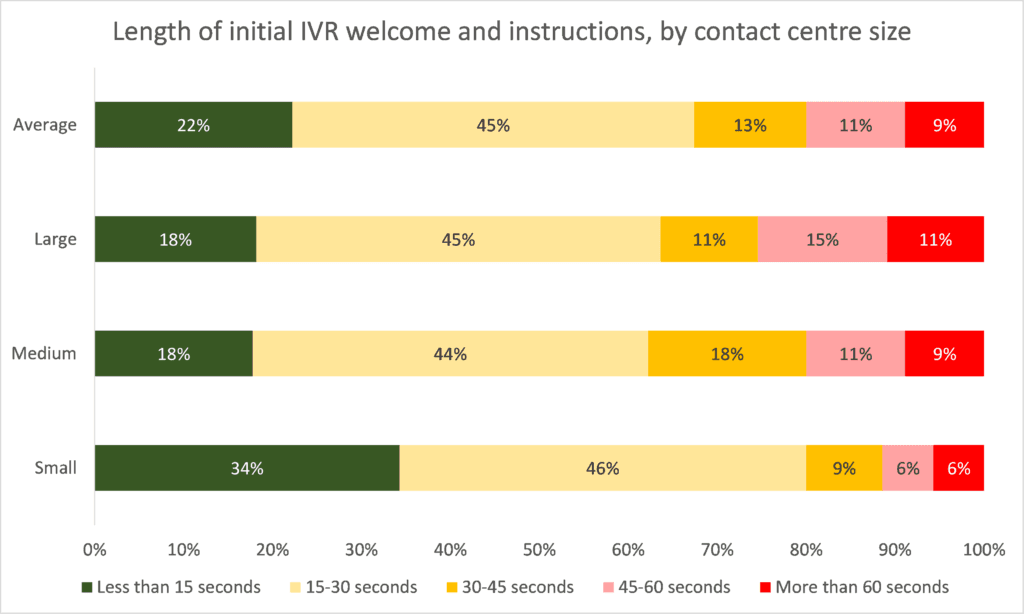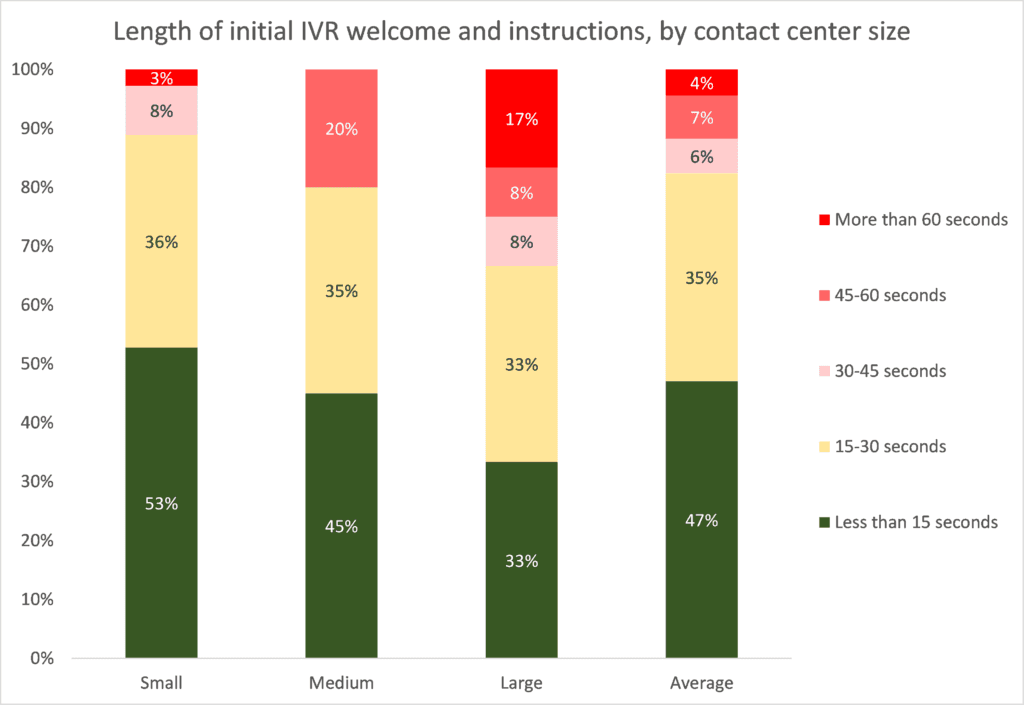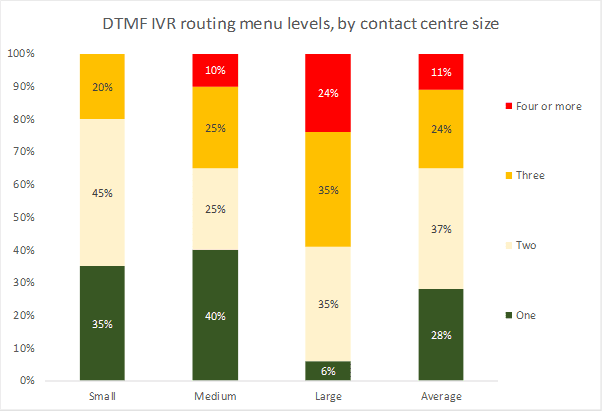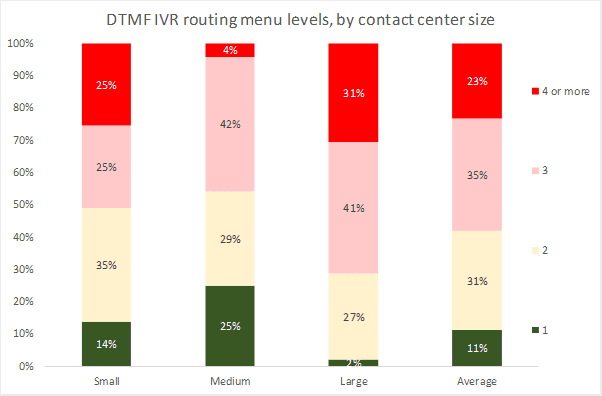The world of customer service has seen a significant evolution, especially in the realm of Interactive Voice Response (IVR). For many, the mention of IVR conjures up images of long waits, complex menus, and the frustrating experience of navigating through multiple options. However, as we delve deeper into the intricacies of the IVR customer experience, it becomes evident that there’s a pressing need for change.
The Traditional IVR Landscape
Traditionally, IVR systems have been viewed by customers as barriers erected by businesses. Instead of facilitating a smooth interaction, these systems often lead customers down a winding path before they can speak to a real person. Large contact centers, especially those with a vast array of departments and services, are notorious for their lengthy initial IVR announcements. In fact, a recent report by ContactBabel and Teneo.ai found that 26% of large UK contact centers take over 45 seconds just for their initial greeting.

Similarly, and 25% of their US counterparts go beyond 45 seconds with their initial message.

Moreover, the complexity doesn’t end there. A staggering 24% of large operations in the UK present their customers with four or more routing menu levels.

In the US, this number jumps to 31%. Imagine the customer’s horror, having to remember and navigate through such a maze, especially when they can’t visually see the options and must listen to each one. It’s no wonder that the traditional IVR customer experience has been less than stellar.

Furthermore, it is not just the number of levels in a menu that can frustrate customers, but also the overall number of options within each level. As the customer cannot see what the options are, but has to listen to each, it can be a very annoying experience.
Conversational IVR: Enhancing IVR Customer Experience
Enter Conversational IVR. Unlike its traditional counterpart, Conversational IVR focuses on providing a more natural, intuitive, and user-friendly experience. Instead of forcing customers to listen to a laundry list of options, it engages them in a dialogue, understanding their needs, and guiding them swiftly to a solution.
So, why is Conversational IVR the future of IVR customer experience?
- Simplicity Over Complexity: Conversational IVR eliminates the need for multiple menu levels and options. By understanding the customer’s spoken words, it can quickly route the call to the appropriate department or provide the necessary information, all without the customer having to press a single button.
- Reduced Wait Times: Remember the statistic about contact centers taking over 45 seconds for their initial announcement? With Conversational IVR, those long waits can be a thing of the past. Customers are promptly engaged in a dialogue, leading to faster resolutions.
- Enhanced User Experience: The rigid structure of traditional touchtone IVR systems often frustrates customers. Conversational IVR, on the other hand, offers a more flexible and adaptive approach, ensuring that the customer feels heard and understood.
The Trade-off: Functionality vs. Usability
Historically, there’s always been a tug-of-war between functionality and usability in IVR systems. The more features an IVR system had, the more complex it became, leading to increased customer frustration. Conversational IVR strikes a balance between the two. It offers the functionality that businesses need while ensuring that usability isn’t compromised.
Introducing Teneo Conversational IVR
In the quest to enhance the IVR customer experience, Teneo Conversational IVR emerges as a game-changer. Powered by Teneo, this cutting-edge AI IVR solution promises to transform the contact center landscape, addressing the pain points of traditional IVR systems and ushering in a new era of customer-centric interactions.
Why Teneo Conversational IVR Stands Out
- AI-Powered Smart Call Routing: Teneo Conversational IVR is not just another IVR system. It’s an AI-driven solution that understands customer intent. By simply asking, “How can I help you today?”, it swiftly interprets caller intent, ensuring that calls are routed to the most suitable agent. This not only reduces average handling time but also provides agents with a clear summary of relevant information, setting the stage for a more efficient and personalized customer interaction.
- Platform Independence: One of the standout features of Teneo is its platform independence. Regardless of how your call center tech-stack is designed, Teneo Conversational IVR seamlessly integrates, ensuring that you don’t have to overhaul your existing technology infrastructure.
- Advanced Linguistic Capabilities: At the heart of Teneo lies the patented Teneo Linguistic Modeling Language (TLML). This, combined with integrated conversational context, allows the system to evaluate sentences, recognize word patterns, and clearly identify caller needs. The result? A more intuitive and responsive IVR system that truly understands the customer.
- Cost-Effective and Easy Installation: Teneo is not only powerful but also cost-effective. With a subscription model based on a fixed cost and call volumes, businesses only pay for what they use. Plus, its simple installation means that contact centers can quickly benefit from its advanced features without any cumbersome setup processes.
The Teneo Conversational IVR Impact
The benefits of Teneo are not just theoretical. Real-world implementations have seen tangible results. A global top 5 tech company that implemented Conversational IVR with Teneo reported a projected ROI of $39M, a 30% reduction in misrouted calls, and a 2-minute reduction in average handling time. Such statistics underscore the transformative potential of Teneo Conversational IVR in redefining the IVR customer experience.
Conclusion: The Future of IVR Customer Experience
The IVR customer experience is at a pivotal juncture. While traditional systems have served their purpose, it’s evident that they’re not cut out for the demands of the modern customer. Conversational IVR, with its emphasis on simplicity, speed, and user-centricity, is poised to redefine the landscape. As businesses grapple with the challenges of delivering superior customer experiences, tools like Teneo Conversational IVR provide a beacon of hope. By leveraging the power of AI, advanced linguistic modeling, and seamless integration capabilities, Teneo Conversational IVR promises to turn every phone call into a love story with your brand.


